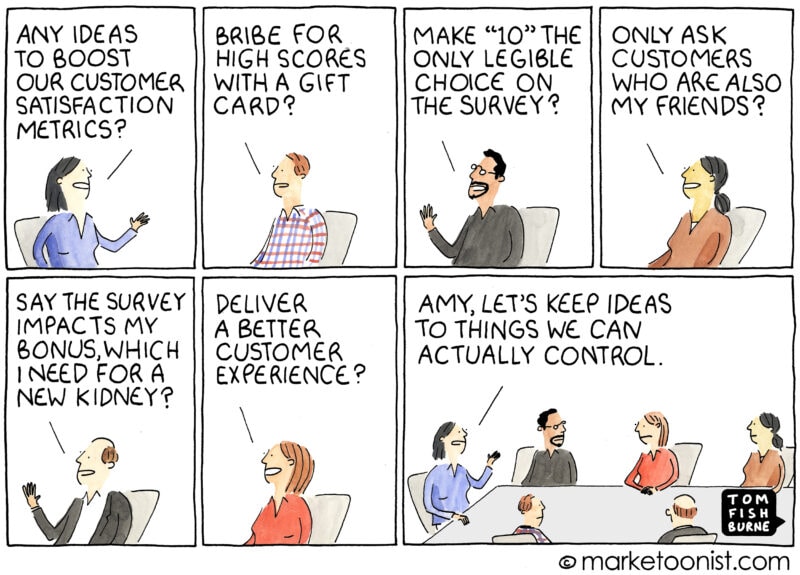Unlock your NPS potential to predict loyalty and sales
Customer loyalty has long been a central focus for businesses to support brand growth, but measuring it, has not always been a simple task. A metric that has continued to gain prominence in this pursuit is the Net Promoter Score (NPS). Recent studies, such as Baehre, O’Dwyer, O’Malley et al. (1) have shed light into the significance of the relationship between loyalty and NPS.
This metric can provide insights into consumer behavior and potential business growth by assessing customer satisfaction. NPS’s simplicity and ease of use has made it a popular tool, however, properly conducting and utilizing it can still be challenge for many. Understanding what type of NPS measure your organization needs and avoiding the common pitfalls is critical for unlocking its true potential.
NPS: A refresher
The Net Promoter Score, introduced by Fred Reichheld in 2003, quantifies customer loyalty based on a single question: “On a scale of 0 to 10, how likely are you to recommend our product/service to a friend or colleague?” Respondents are then classified into three categories: Promoters (9-10), Passives (7-8), and Detractors (0-6). The NPS is calculated by subtracting the percentage of Detractors from the percentage of Promoters.

The simplicity of the metric is one of its strengths, serving as a compass for customer loyalty and business growth potential, while encompassing the many attributes of consumer motivations.
As the concept has evolved, there are now “two flavors” of NPS:
- NPS Loyalty: measures scores among current consumers of your brand to determine the probability of repeat purchases within your own customer base.
- NPS Brand Health: is more inclusive across the purchase funnel and measures scores from those aware of your brand, whether they have purchased it or not. This measure tends to provide a better total forecast of future brand performance particularly for brands with higher total awareness.
As you apply it, be sure you use the NPS that best aligns with your organizational goals. The type of NPS metric a company needs is not universal; it depends on the brand and its goals. This variance is due to differences in brand objectives, the level of brand awareness, the business model, the target customer segments, and the industry the business operates.
For example, smaller brands with lower awareness may find that NPS Loyalty fulfills their needs and is easier to conduct using their own first party data. But for businesses focusing on enhancing their brand image, expanding their outreach, or launching a new product, the NPS Brand Health metric will be critical as it encompasses the entire purchase funnel, giving businesses a holistic view of their brand’s performance and future potential.
Measuring NPS Brand Health over time can also provide an understanding of the direction of future business more than just as a static measurement. It allows businesses to better plan for expected consumer impacts. For one of our clients in a business with a high degree of potential loyalty, we used multiple data points to create a predictive model for NPS. The components were weighted and used to predict what changes will drive the NPS score, allowing the firm to proactively address levers that are driving consumer sentiment.
Challenges of NPS
It is clear that challenges remain in the interpretation and usage of NPS scores. Critics argue that NPS is a simplistic measure that might not fully capture the complexity of customer loyalty. Additionally, variations in industry norms, customer demographics, and particularly how the measurement is conducted, can impact the benchmark for what constitutes a “good” NPS score.
We have all probably encountered biased or poorly executed applications of NPS tools. Take a personal example: my go-to automotive dealership typically hands me a survey for feedback after every service. The representative tells me any score less than a 10 is deemed unacceptable, as they get ‘rewarded’ based on the results and asks me what could elevate their rating.
Manipulating survey responses does not help your business in drawing valuable insights or predicting future customer loyalty. Instead, it often fosters an inappropriate reward system that fails to encourage brand improvement and cultivate customer loyalty. What made my encounter even worse was that following a service where the final charge greatly exceeded the initial quote, no survey was provided.
Tom Fishburne created a humorous Marketoonist strip on this topic that I love sharing as it perfectly exemplifies what not to do when using an NPS tool.

The bottom line
NPS has emerged as a vital tool that many brands are leveraging today, however, to unlock its full potential it’s crucial to identify what NPS metric your company needs, conduct the survey correctly and integrate its findings effectively. Focus on your brand’s unique circumstances and objectives when deciding to opt for NPS Brand Health or NPS Loyalty. The former provides a comprehensive view of your brand from the perspective of existing and potential customers, while the latter focuses specifically on your current customers’ loyalty. When executed successfully, either method can be a real asset and create a predictive model, providing strategic foresight to the brand team.
If you are interested in gaining a better understanding of how NPS studies and tracking can impact your business and loyalty, reach out to me (mhugo@magid.com) or any of my Magid colleagues at LetsTalk@Magid.com.
—
(1) Baehre, S., O’Dwyer, M., O’Malley, L. et al. The use of Net Promoter Score (NPS) to predict sales growth: insights from an empirical investigation. J. of the Acad. Mark. Sci. 50, 67–84 (2022). https://doi.org/10.1007/s11747-021-00790-2

